Pink Waxcap / Autumn / Winter / Edible
The Pink Waxcap is one of the rarest and most beautiful fungi in the UK. Quite easy to ID but they should be photographed and left untouched.
Scientific Name
Porpolomopsis calyptriformis
Common Names
Pink Waxcap, Ballerina Waxcap
Family
Hygrophoraceae
Habitat
They are found in unimproved fields and pasture, verges and church yards.
Description
One of the rarest and most beautiful fungi in the UK. It was only removed from the Red Endangered List in 2006. Quite easy to ID but they should be photographed and left untouched.
Identifying Features of the Pink Waxcaps:
Cap:
They are very convex when young they flatten out with age and tend to split at the edge. They tend to only be slimy when young and wet and they can be up to 6cm across. The flesh white with a slight pink tinge. They are normally found between September and December.
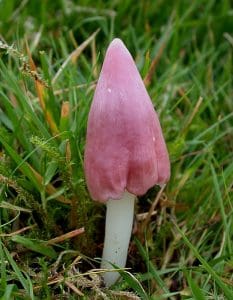
Stem
White with a pink tinge, smooth, hollow and up to 5cm long.
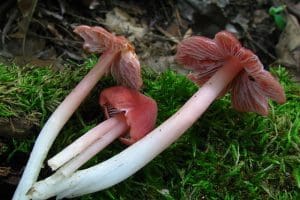
Gills
Pink when young becoming paler with age. They are adnate and fairly widely spaced.
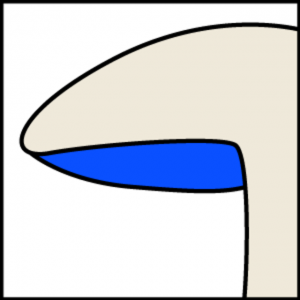
Smell:
No strong smell.
Spores:
White
Uses
In food
They are edible but due to habitat loss and changes in land use, Waxcaps are getting rarer and rarer. I personally don’t eat them for this reason and the fact that they are pretty insubstantial.
Known hazards
None known.
Potential lookalikes
They are the only pink Waxcap with a pointed cap.
Extra Notes from the Foragers
For a long time it was thought that Waxcaps were saprotrophic feeding on the dead root systems of grass. Modern research suggests that they have a symbiotic relationship with mosses.
Reference:
https://www.aber.ac.uk/waxcap/index.shtml
https://www.first-nature.com/fungi/porpolomopsis-calyptriformis.php
1 reply on “Pink Waxcap (Porpolomopsis calyptriformis) Identification ”
Leave a Reply
You must be logged in to post a comment.




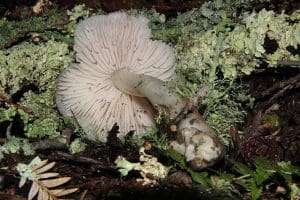
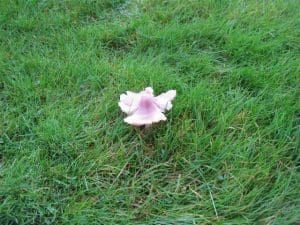
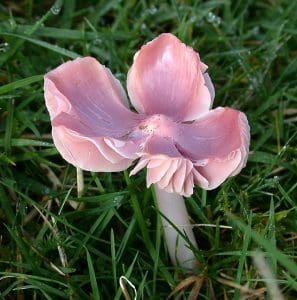



For the first time we have several of the pink wax caps, some in a small ring and others singly in our field which we do not spray or have animals grazing.